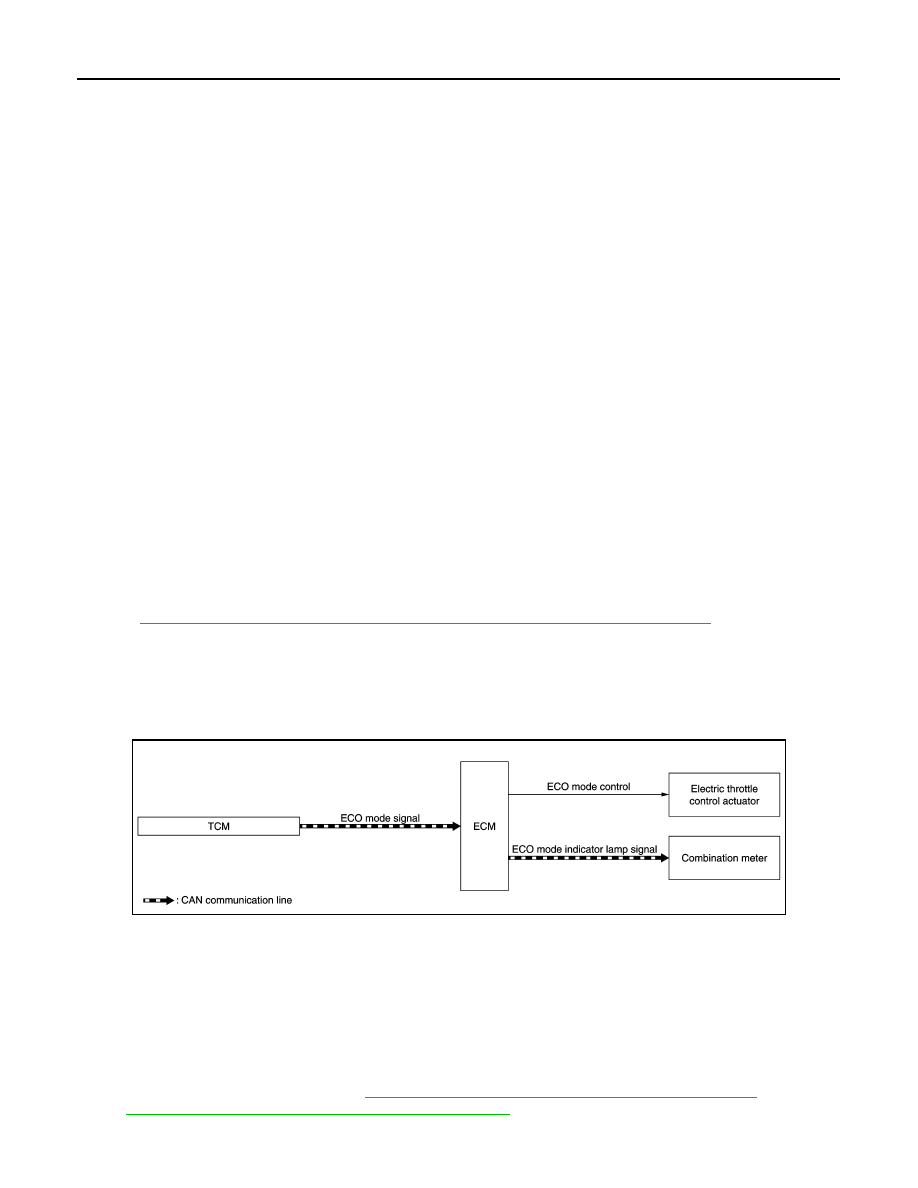Nissan Sentra. Manual - part 339

EC-52
< SYSTEM DESCRIPTION >
[MRA8DE]
SYSTEM
When the ECM detects any of the following conditions, the ECM will cancel the cruise operation and inform
the driver by blinking indicators.
• Engine coolant temperature is slightly higher than the normal operating temperature, CRUISE indicator may
blink slowly.
When the engine coolant temperature decreases to the normal operating temperature, CRUISE indicator will
stop blinking and the cruise operation will be able to work by pressing SET/COAST switch or RESUME/
ACCELERATE switch.
If MAIN switch is turned to OFF during ASCD is activated, all of ASCD operations will be canceled and vehicle
speed memory will be erased.
COAST OPERATION
When the SET/COAST switch is pressed during cruise control driving, decrease vehicle set speed until the
switch is released. And then ASCD will keep the new set speed.
RESUME OPERATION
When the RESUME/ACCELERATE switch is pressed after cancel operation other than pressing MAIN switch
is performed, vehicle speed will return to last set speed. To resume vehicle set speed, vehicle condition must
meet following conditions.
• Brake pedal is released
• Selector lever is in other than P and N positions
• Vehicle speed is greater than 40 km/h (25 MPH) and less than 144 km/h (89 MPH)
CAN COMMUNICATION
CAN COMMUNICATION : System Description
INFOID:0000000009758375
CAN (Controller Area Network) is a serial communication line for real time application. It is an on-vehicle mul-
tiplex communication line with high data communication speed and excellent error detection ability. Many elec-
tronic control units are equipped onto a vehicle, and each control unit shares information and links with other
control units during operation (not independent). In CAN communication, control units are connected with 2
communication lines (CAN H line, CAN L line) allowing a high rate of information transmission with less wiring.
Each control unit transmits/receives data but selectively reads required data only.
Refer to
LAN-30, "CAN COMMUNICATION SYSTEM : CAN Communication Signal Chart"
munication for detail.
ECO MODE CONTROL
ECO MODE CONTROL : System Description
INFOID:0000000009758376
SYSTEM DIAGRAM
SYSTEM DESCRIPTION
• ECM receives an ECO mode signal from combination meter via CAN communication and improves the fuel
economy by controlling the throttle movement to less than usual. Therefore, driving characteristic is con-
trolled (reducing energy consumption by decreasing needless acceleration and deceleration), so that driving
that improved operational fuel efficiency is assisted.
• ECM receives an ECO mode signal from TCM via CAN communication and improves the fuel economy by
controlling the throttle movement to less than usual.
• ECM transmits an ECO mode indicator lamp signal to the combination meter via CAN communication.
NOTE:
For the details of the ECO mode, refer to
DMS-26, "ECO MODE CONTROL : System Description"
(CVT mod-
DMS-6, "ECO MODE CONTROL : System Description"
SPORT MODE CONTROL
JPBIA5876GB